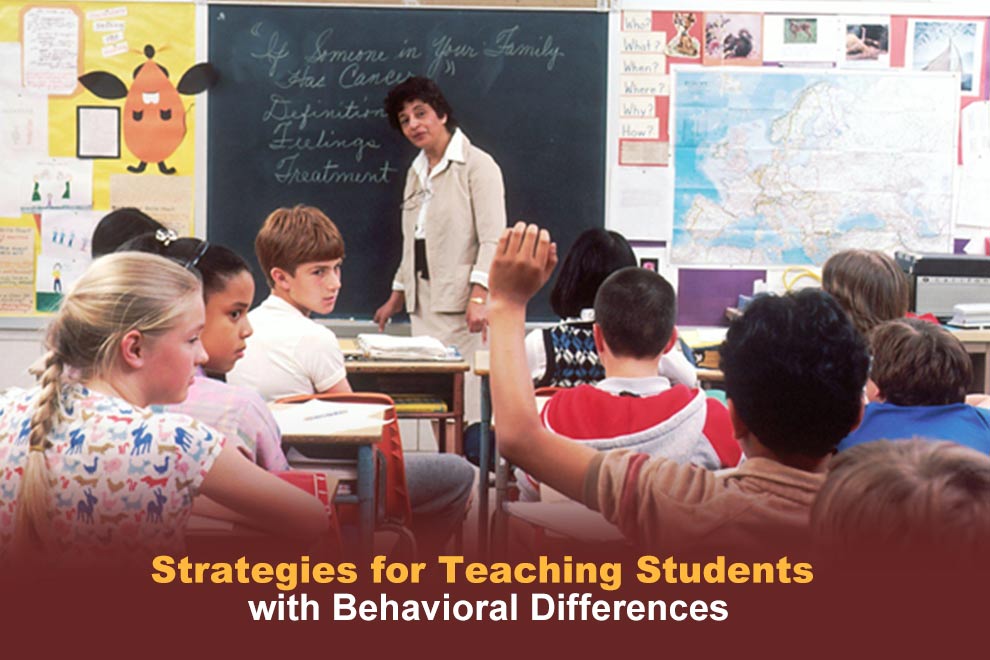Students bring their unique strengths and talents, as well as varied ways of expressing themselves, to every classroom. Some learners may struggle to regulate their emotions, follow routines, or respond to social expectations in typical ways. For teachers, these behavioral differences can sometimes feel like challenges, yet they also present powerful opportunities for growth, empathy, and connection. Teachers should understand that all behavior is a form of communication and shift their mindset from one of control to one of curiosity and support. In this article, we explore what every teacher should know about supporting students with behavioral differences.
Recognize Behavior as Communication
One of the main changes that a teacher should make is to see that behavior is rarely just ‘acting out’ or ‘being difficult.’ Instead, many forms of socially inappropriate behavior serve as a form of communication. A student might be interrupted, withdrawn, disengaged, defiant, or restless, not out of deliberate mischief but because they are trying to communicate something or there is an unmet need.
For children, especially those with autism and neurodivergent needs, all behavior is communication. When you adopt this lens as a teacher, the behavior becomes an invitation to understand what the student is trying to say and what they need from the environment, rather than scolding the children.
The mindset helps teachers remain curious rather than frustrated. Teachers can wonder what triggers this behavior and what alternative communicative form might better serve the student.
Adopt a Positive and Proactive Mindset Actionable
To support students with behavioral differences, a teacher’s mindset matters just as much as their approach to them. Some ways to change your attitude include:
- See potential, not just challenge: Students whose behavior differs often bring a unique perspective, strengths, and resilience. Instead of viewing the behavior solely as a disruption, consider it a sign of need.
- Be proactive rather than purely reactive: It’s much more effective to anticipate and plan for behavioral differences than to respond simply after the fact. Early planning can help to reduce any form of escalation.
- Maintain connection before correction: Research shows that connection and relationship form the basis of supportive behavior management. If a student feels understood and supported, they can streamline their behaviors.
- Keep calm and stay consistent: When behavior escalates, a teacher’s role matters. They need to give calm and consistent responses. A teacher’s communication strategies have a significant influence.
Strategies for Supporting Behavioral Differences
For a teacher who has students with behavioral differences, there are different strategies to adapt. From teaching alternative behaviors to preparing an inclusive classroom, here are some ways a teacher can support a child with behavioral differences.
Set Clear and Positively Worded Expectations
Use statements of what students should do rather than what they shouldn’t. For instance, you can say, ‘Please raise your hand and wait to be called,’ instead of saying, ‘Don’t shout out.’ When teaching children, use clear and directive language to ensure effective communication.
Make expectations visible by posting charts and visuals in the classroom, reviewing them regularly, and practicing them with the class. This can encourage them to engage in good behavior.
Teach Replacement and Alternative Behaviors
If a student is displaying a unique behavior, you should ask what the child is trying to gain, like sensory input in the case of children with autism. Then, you can either create room for the child to exhibit their behavior when needed, or teach replacement behaviors if what they are doing is dangerous.
For instance, if a child with autism engages in dangerous stimming behaviors like head banging, scratching at skin, biting, pulling out hair, or hitting, teachers should focus on teaching replacement behaviors rather than trying to force them. Practice the replacement behavior, praise it explicitly, and provide positive reinforcement when it is used.
Use Positive Reinforcement Generously
Teachers should focus on giving far more attention to what is going well, rather than what isn’t. For instance, for every single corrective comment, you should mention five positive comments.
When praising a child, be specific. For instance, you should say, ‘Thank you for turning in your worksheet one time without needing a reminder.’ This helps the student recognize that this is good behavior that should be repeated.
Prepare and Structure the Environment
Many behavioral differences come up because the environment can’t meet the student’s needs. Adapt where possible, and provide breaks, opportunities for movement, and correct seating arrangements to ensure optimal comfort and well-being. Predictable routines are a good way to prevent dangerous behavior in children, especially those with autism.
It’s also a good idea to create sensory spaces in the classroom for sensitive children, helping them calm down when they exhibit behavioral differences. With this, teachers can avoid overstimulating environments and create a supportive setting for children.
De-Escalate Techniques and Safe Responses
When behavior begins to escalate, a teacher’s response will determine whether the situation will calm down or intensify. Some practical approaches include:
- Take a moment to pause and take a deep breath before responding.
- Use a simple, neutral request like, ‘Let’s take a moment and then continue.’
- Minimise any demands during escalation and don’t give them complex instructions until they feel calm.
- Offer choices that can restore a sense of control, like asking, ‘Would you prefer to work at the table or the carpet for a few minutes?’
- After the regulation, help the student reflect on what happened, taking into account their age. Ask questions like, ‘What did you feel?’ ‘What did you need?’ ‘What could you try next time?’
Creating Environments Where Students Feel Supported
Teachers should adopt the mindset that behavior is meaningful and approach behavioral differences with curiosity, connection, and a calm demeanor. They should also be proactive in caring for children with behavioral differences by teaching alternatives, creating the right environments, and reinforcing positive behavior. Teachers should also respond with de-escalation techniques and thoughtful reflection, and collaborate with families to ensure the proper care of the students.










